| 1 April |
• yesterday • tomorrow |
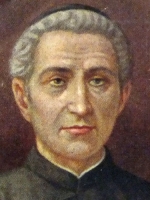
Ludovic Pavoni
Trained in theology by the Dominican Father Carlo Ferrari, future bishop of Brescia, Italy. Ordained in 1807. Founded an Oratory for Christian education of poor boys in Brescia. Secretary to bishop Gabrio Nava in 1812.
Rector of Saint Barnabas church in 1818 where soon after he founded an orphanage and associated trade school, basing his work on the idea that improving social conditions will improve the spiritual life, and improving the spiritual life will improve social conditions. In 1821 the school became the Institute of Saint Barnabas. Along with carpentry, silversmithing, blacksmithing, shoemaking, agriculture, and tool and dye makers, the school stressed the trades of printing and publishing. In 1823 Ludivico established The Publishing House of the Institute of Saint Barnabas; it exists today under the name Ancora. That same year, the school began taking in deaf and mute students.
In 1825 he founded a religious congregation of priests and brothers to run the school; it became the Sons of Mary Immaculate (Pavoniani or Pavonians). Pope Gregory XVI authorized it for Brescia in 1843, and on 8 December 1847, Ludovico and the first members made their religious profession. Today there are 210 members in Brazil, Colombia, Eritrea, Germany, Italy and Spain, and they still publish books.
On 24 March 1849, Brescia was in rebellion against the Austrians. Both sides were ready to pillage the city and Father Ludovico led his boys to safety at Saiano, seven miles away. He died a week later as Brescia was in flames, but his boys were safe.
11 September 1784 at Brescia, Italy
Palm Sunday, 1 April 1849 at Saianco, Italy of natural causes
• 14 April 2002 by Pope John Paul II
• the beatification miracle involved the 1909 cure of Maria Stevani from typhoid fever
16 October 2016 by Pope Francis
Sons of Mary Immaculate
"This Jesus God has raised him up and of that we are all witnesses" (Acts 2:32). The interior consciousness, that became a burning and invincible faith, guided the spiritual and priestly experience of Lodovico Pavoni, priest, founder of the Congregation of the Sons of Mary Immaculate. Gifted with a particularly sensitive spirit, he was totally given over to the care of poor and abandoned youngsters and even deaf-mutes. His activity branched out in many directions, from that of education to the publishing sector, with original apostolic intuitions and courageous innovations. At the basis of everything, there was a solid spirituality. By his example, he exhorts us to place our confidence in Jesus and to be ever more immersed in the mystery of his love. – from the beatification homily by Pope John Paul II
https://catholicsaints.info/saint-ludovico-pavoni/
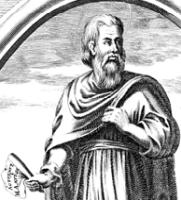
• Melito of Asia
• Meliton, Melitone, Melitus
Bishop of Sardis, Lydia (part of modern Turkey). Ecclesiastical writer; he wrote an Apology (defense of Christianity) addressed to emperor Marcus Aurelius. Almost nothing else is known about his life.
• c.180 of natural causes
• interred at Sardis, Lydia (part of modern Turkey)
• Eclogues
• On His prophecy
• On baptism
• On faith
• On hospitality
• On the Apocalypse of John
• On the Corporeality of God
• On the Lord's day
• On the church
• On the devil
• On the generation of Christ
• On the lives of the prophets
• On the passover
• On the psalms
• On the senses
• On the soul and body
• On truth
• The Key
The Lord, though he was God, became man. He suffered for the sake of whose who suffer, he was bound for those in bonds, condemned for the guilty, buried for those who lie in the grave; but he rose from the dead, and cried aloud: "Who will contend with me? Let him confront me." I have freed the condemned, brought the dead back to life, raised men from their graves. Who has anything to say against me? I, he said, am the Christ; I have destroyed death, triumphed over the enemy, trampled hell underfoot, bound the strong one, and taken men up to the heights of heaven: I am the Christ. Come, then, all you nations of men, receive forgiveness for the sins that defile you. I am your forgiveness. I am the Passover that brings salvation. I am the lamb who was immolated for you. I am your ransom, you life, your resurrection, you light, I am your salvation and your king. I will bring you to the heights of heaven. With my own right hand I will raise you up, and I will show you the eternal Father. - from a letter by Saint Melito of Sardis
Born as a son,
led forth as a lamb,
sacrificed as a sheep,
buried as a man,
he rose from the dead as a God,
for he was by nature God and man.
He is all things:
he judges, and so he is Law;
he teaches, and so he is Wisdom;
he saves, and so he is Grace;
he begets, and so he is Father;
he is begotten, and so he is Son;
he suffers, and os he is Sacrifice;
he is buried, and so he is man;
he rises again, and so he is God.
This is Jesus Christ,
to whom belongs glory for all ages.
- prayer by Saint Melito
https://catholicsaints.info/saint-melito-of-sardis/
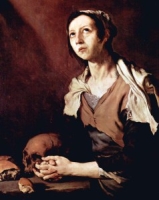
Maria Aegyptica
Beautiful, spoiled, cynical, disenchanted, rich child who was the center of her family's pride, and who repaid them by running away at age 12. She ran to Alexandria, Egypt where she worked as a dancer, singer, and prostitute for 17 years. Around age 30, Mary took ship on a pilgrimage to Palestine, hoping to ply her trade among the pilgrims, and then in Jerusalem.
On the Feast of the Exaltation of the Cross she moved with the crowds to the church, looking for customers. At the church door she found herself invisibliy repelled, unable to open the door; she was overcome with remorse for her life and exclusion from the Church. She repented, and asked for Our Lady‘s guidance; a voice told that to find rest, she should cross the Jordan River. The next day Mary crossed the river, wandered into the desert, and took up the life of a hermit for nearly 50 years as penance.
She lived on herbs, berries, and whatever came to hand. She met Saint Zosimus of Palestine. She once told him to come back exactly one year from that day; when he did, he found she had died. With the help of a lion, Zosimus dug her grave; he later wrote a biography of her, and her life was a popular story in the Middle Ages.
c.344 in Egypt
• c.421 in the desert near the River Jordan of natural causes
• relics at Rome, Naples, and Cremona in Italy, and in Antwerp, Belgium
• against sexual temptation
• penitent women
• reformed prostitutes
• woman being chased from a church by an angel with a sword
• woman holding three loaves of bread
• woman kneeling before a skull
• woman receiving Holy Communion from Saint Zosimus of Palestine
• woman sitting at a table with a skull and bread
• woman sitting under a palm tree and looking across the Jordan River
• woman washing her hair in the Jordan River
• woman with Saint Mary Magdalen
• woman with the lion who dug her grave
• naked woman clothed with long hair
https://catholicsaints.info/saint-mary-of-egypt/
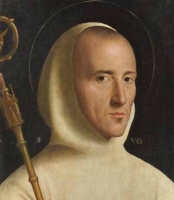
Hugh of Châteauneuf
22 April (Carthusian Order)
Son of a soldier named Odilo, a man known for his Christian life, and who later became a Cistercian monk; his mother was known for her life of prayer and alms-giving. Uncle of Saint Hugh of Bonnevaux. Hugh was an exceptionally good student as a child. Canon in the cathedral of Valence, France at age 25. Bishop of Grenoble, France in 1080 at age 27, consecrated by Pope Gregory VII; he served there for 52 years. He went to Grenoble as a reformer, but after two years, convinced that he had not improved the lives or the holiness of his clergy, he resigned and retired to become a Benedictine monk at Chaise-Dieu in Auvergne, France; after a year of this, Pope Gregory ordered him back to Grenoble. This time his work and his example paid off - large crowds attended his preaching, his clergy brought new zeal to their ministry, the poor were cared for, and religious life had a new start in his diocese. He gave land to Saint Bruno for La Grande Chartruse abbey, and helped him found the Carthusians. Gave both his mother and his 100 year old father their Last Rites. A frequent sufferer of head pain and headaches, which led to his patronage of the problem.
1053 at Chateauneuf, Dauphiné, France
• 1 April 1132 in Grenoble, France of natural causes
• interred in Saint Mary's Cathedral, Grenoble
• relics burned by the Huguenots in the 15th century
22 April 1134 by Pope Innocent II during the Council of Pisa
• against headache
• Grenoble, France
• carrying a lantern
• one of a group of seven stars, representing the founders of the Carthusians
• with Saint Bruno
• with three flowers in his hand
https://catholicsaints.info/saint-hugh-of-grenoble/
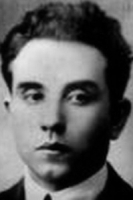
Anaclete Gonzales Flores
Second of twelve children born to Valentín González Sanitiz and Maria Flores Navaho. He entered seminary, was an excellent student, but realized that he did not have a call to the priesthood and dropped out. Lawyer in the archdiocese of Guadalajara, Mexico. Married to María Concepción Guerrero, they had two children. He attended Mass daily, visited prisoners, and taught catechism. Leader in the Catholic Association of Mexican Youth (AJCM). Founded the magazine La Palabra to speak out against the anti-Catholic actions of the government. Founded the Popular Union to organize peaceful opposition to the Calle government's anti-Catholic actions. When official oppression escalated to murder, Anacleto began writing and speaking out against the government, urging people to support and aid the rebels in what became known as the Cristero War. Looking for a way to crack down on the Catholic leadership, officials arrested Anacleto on a false charge of murdering an American, Edgar Wilkens. Gonzales was tortured, mutilated and finally executed. Martyr.
13 July 1888 in Tepatitlán, Jalisco, Mexico
shot by a firing squad on 1 April 1927 in Guadalajara, Jalisco, Mexico
• 20 November 2005 by Pope Benedict XVI
• recognition celebrated by Cardinal José Saraiva Martins in a soccer stadium in Guadalajara, Mexico
I die but God does not die! - Blessed Anacleto's last words
https://catholicsaints.info/blessed-anacleto-gonzalez-flores/
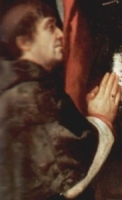
• Cellach Mac Aodh
• Cellach Mc Aedh
• Cellach of Armagh
• Ceilach, Ceillach, Celestinus, Celsus, Keilach, Kelly
Son of Áed mac Máele Ísu meic Amalgada of the Clann Sínnaig. Benedictine monk. May have been a monk at Glastonbury. Teacher at Oxford, England. Last hereditary archbishop of Armagh, Ireland in 1106. Built a reputation as a reformer and able administrator. Travelled throughout Ireland, preaching reform and ensuring discipline. Helped preside at the Synod of Rath Bresail in 1111, which helped align the Irish church administration with the rest of Europe. Rebuilt the Armagh cathedral. Founded the monastery of Kells. Peacemaker between warring Irish kings and chieftains. Worked with, and ordained his friend Saint Malachy O'More. From his deathbed, he appointed Malachy as Archbishop of Armagh, ending the tradition of hereditary succession to the see.
c.1080 in Ireland
• 1 April 1129 at Ardpatrick, Munster, Ireland of natural causes
• buried in Lismore, Ireland
https://catholicsaints.info/saint-celsus-of-armagh/
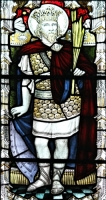
• Tewdrig ap LLywarch
• Tewdrig of Tintern
• Theodoricus, Theodoric, Teudrig, Tewdric, Tudric
Born a prince, the son of King Ceithfalt of Morganwg; he became king upon his father‘s death. A great supporter of the Church, Tewdrig abdicated in favour of his son Meurig, and then retired to live as a prayerful hermit at Tintern, Montmouthsire, Wales. When the pagan Saxons led by Ceolwulf invaded the region, Tewdrig left his hermitage, took up arms again, led his troops into battle, defeated the Saxons at Pont-y-Saeson, but died from wounds received in the fight. Considered a martyr as he died defending his Christian realm from pagans.
5th to 6th century
• the area of Mathern, Wales of wounds received in battle, possibly a head wound based on descriptions of his skull seen in 1615
• a church named Marthyr Tewdrig was built over the grave, and the town of Mathern grew up around it
https://catholicsaints.info/saint-tewdrig-ap-teithfallt/
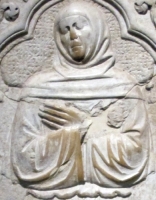
• Enrico d'Asti
• Enrico of Asti
• Henry...
Born to the nobility of the Asti region of modern Italy, the son of Guglielmo and Agnesina Alfrieri. He joined the Franciscan friars in Asti at age 15. He eventually became superior of the house. Superior of the Genoese province in 1372. Vicar of the Order of Friars Minor Conventual in 1387. Minister General of the Franciscan Order from 1387; he served in this position the remaining 18 years of his life, which included the period of the Great Western Schism. He conducted six General Chapters, and led a reform of the Order to increase devotion to the Rule.
1315 in Asti, Italy
• 1405 in Ravenna, Italy of natural causes
• buried in the floor of the church of San Francesco in Ravenna
https://catholicsaints.info/blessed-enrico-alfieri/
After studying at the concilar seminary of Guadalajara, Mexico from 1917 to 1921, Luis suffered doubts about his vocation and put off further studies. He worked as a teacher, but also conducted free classes for poor boys. One of the founders of the Catholic Youth Association of Mexico, Luis spent more and more time in prayer, meditation and Eucharistic adoration. In 1926, about the time Luis was considering a return to the seminary, anti–Christian persecutions began as part of the Mexican Revolution, which led to his arrest and execution. Martyr.
9 December 1899 in Guadalajara, Jalisco, Mexico
• shot by a firing squad on 1 April 1927 in the prison court yard in Guadalajara, Jalisco, Mexico
• relics enshrined in the Madonna of Guadalupe chapel of the parish church of San Giuseppe ad Analco
20 November 2005 by Pope Benedict XVI
https://catholicsaints.info/blessed-luis-padilla-gomez/
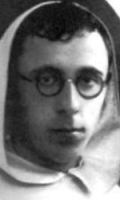
Dominican priest, making his religious profession in 1923 and being ordained on 3 August 1930. Studied at the école Biblique in Jerusalem. Taught scriptural studies at the Dominican Theological Seminary at Turin, Italy. Arrested by Nazi authorities on 19 August 1944 for arranging hideouts and escape routes for Jews, and shuffled from one concentration camp to another before his death. He spent his time ministering to other prisoners. Martyr.
19 July 1905 in Alba, Cuneo, Italy
1 April 1945 in concentration camp at Dachau, Oberbayern, Germany
• 26 April 2014 by Pope Francis
• beatification recognition was celebrated at the Cathedral of San Lorenzo, Alba, Cuneo, Italy, presided by Cardinal Angelo Amato
https://catholicsaints.info/blessed-giuseppe-girotti/
Nephew of Saint Hugh of Grenoble. Cistercian Bendictine monk at Mezieres Abbey, joining the Order in 1138. Abbot at Leoncel, France in 1163. Monk at Bonnevaux Abbey in 1169. Noted for gifts of spiritual discernment and for his ministry as an exorcist. Mediated the conflict between Pope Alexander III and Emperor Frederick Barbarossa in 1177.
c.1120 at Châteauneuf d'Isère, Valence, Drôme, France
• 1194 of natural causes
• interred in the church in Bonnevaux Abbey
• miracles reported at his grave
• grave disturbed during the Reformation
• relics re-interred in 1743
• relics moved to a new chapel in 1966
9 December 1903 by Pope Saint Pius X
diocese of Valence, France
https://catholicsaints.info/blessed-hugh-of-bonnevaux/
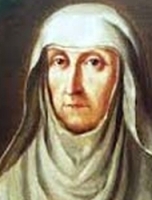
Sofia Czeska-Maciejowska
Married young, and widowed young. Founded the Congregation of the Virgins of the Presentation of the Blessed Virgin Mary, dedicated to caring for and the education poor and orphaned girls.
1584 in Budziszowice, Kazimierski, Poland
1 April 1650 in Kraków, Poland of natural causes
• 9 June 2013 by Pope Francis
• beatification recognition celebrated by Cardinal Angelo Amato at the Sanktuarium Bozego Milosierdzia, Kraków-Lagiewniki, Poland
https://catholicsaints.info/blessed-zofia-czeska-maciejowska/
The son of a physician, Ramón’s family moved to Guadalajara, Mexico when the boy was nine years old. Member of the Catholic Youth Association of Mexico. Noted for his ministry to the poor. Imprisoned and executed in the Mexican Revolution.
22 January 1905 in Ahualulco de Mercado, Jalisco, Mexico
• shot by a firing squad on 1 April 1927 in the prison court yard in Guadalajara, Jalisco, Mexico
• he was making the sign of the cross as he was shot
• relics enshrined in the parish church of Saint Francis of Assisi in Ahualulco de Mercato, Mexico
20 November 2005 by Pope Benedict XVI
https://catholicsaints.info/blessed-ramon-vargas-gonzalez/
The son of a physician, Jorge's family moved to Guadalajara, Mexico when the boy was fifteen years old. As a young man he worked for the local hydroelectric company. Martyred in the Mexican Revolution.
28 September 1899 in Ahualulco de Mercado, Jalisco, Mexico
• shot by a firing squad on 1 April 1927 in Guadalajara, Jalisco, Mexico
• relics enshrined in the parish church of Saint Francis of Assisi in Ahualulco de Mercato, Mexico
20 November 2005 by Pope Benedict XVI
https://catholicsaints.info/blessed-jorge-vargas-gonzalez/
Vinebaldo, Vinebaldus, Guenebert
Shepherd at Villeneuve-la-Lionne, near the Ferté-Gaucher in Brie Champagne, France. Attended school in Ferté-Gaucher. Miracle worker.
• early 13th century of natural causes
• a healing spring was reported to have emerged from his gravesite, and it became a place of pilgrimage
• when anti–Christian French Revolutionaries mocked the saint by washing their clothes in the healing waters, the spring dried up
https://catholicsaints.info/blessed-vinebault/
• Nicolò of Arco
• Nicolò of Arcu
• Nicola, Nicholas
Born to the Italian nobility, part of the family of the Counts of Isimbard. Cistercian monk at the monastery of Santa Maria dell'Arco in modern Noto Antica, Italy. Miracle worker.
• c.1220 in Noto (modern Noto Antica), Sicily, Italy of natural causes
• relics enshrined in a silver reliquary in the Cistercian church in Noto, Italy
https://catholicsaints.info/blessed-nicolo-of-noto/
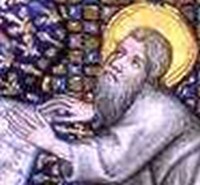
• Valery of Leuconay
• Gualaric, Valarico, Valerico, Valerio, Walaric, Walarich, Walarico, Waleric, Walerico, Walericus, Walric
Monk at Luxeuil Abbey. Founded the monastery of Leuconay, France. The town of Saint-Valery-sur-Somme was named for him.
c.622
monk in a white habit holding a staff
https://catholicsaints.info/saint-valery-of-leucone/
• Adrian, Frechor, Frechorius, Frichor, Fricoraeus
• Apostle of Picardy
Monk. Spiritual student of Saint Columba of Iona. Missionary to the Picardy region of northern France in 622 where he worked with Saint Caidoc. They converted many, including Saint Richarius of Celles who then protected them from local pagans.
Irish
• c.630 in Centula (modern St-Riquier), France
• relics in the parish of Saint-Riquier near Amiens, France
https://catholicsaints.info/saint-fricor/
Tenth bishop of Atina, Italy from 288 to 313. When Prudentius tried to destroy a statue of the goddess Juno, local pagans killed him in the street in front of Juno's temple. Martyr.
• 28 March 313 in Atina
• buried by his killers near the temple of Juno in Atina as a sign of the triumph of the pagans over the Christian
• body recovered and re-interred at the parish church of Saint Peter by local Christians on 1 April 313
https://catholicsaints.info/saint-prudentius-of-atina/
• Cadoc, Cadou, Caidocus, Caidos
• Apostle of Picardy
Monk. Spiritual student of Saint Columba of Iona. Missionary to the Picardy region of northern France in 622 where he worked with Saint Fricor. They converted many, including Saint Richarius of Celles who then protected them from local pagans.
Irish
• c.630 in Centula (modern St-Riquier), France
• relics in the parish of Saint-Riquier near Amiens, France
https://catholicsaints.info/saint-caidoc/
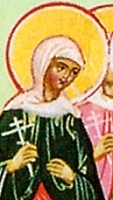
Acapis
Sister of Saint Chionia and Saint Irene. Convicted of possessing the Scriptures despite a prohibition issued in 303 by Emperor Diocletian. She was ordered to sacrifice to pagan gods; she refused. Martyr.
3rd century in Thessalonica, Macedonia
burned alive in 304
https://catholicsaints.info/saint-agape-of-thessalonica/

Joined the Mercedarians in Palermo, Sicily. Worked at the convent in Bonaria, Italy. Sent to north Africa to ransom Christians imprisoned by Muslims, he was imprisoned and then executed for his faith as a public amusement. Martyr.
burned to death 1317 in front of the palace of King Muley Moamet in Tunis, Tunisia
https://catholicsaints.info/blessed-alexander-of-sicily/
22 November as one of the Martyrs of England, Scotland, and Wales
Married layman. Father. Martyred in the persecutions of Queen Elizabeth I for remaining loyal to the Catholic Church.
c.1527 in West Bretton, West Yorkshire, England
hanged on 1 April 1598 in York, North Yorkshire, England
22 November 1987 by Pope John Paul II
https://catholicsaints.info/blessed-john-bretton/
Gilbert of Caithness
Son of Duke William de Moravia. Bishop of Caithness, Scotland for 20 years, during which he built the cathedral there. Fierce proponent of Scottish independence, often opposing the archbishop of York, England in matters that he thought would reduce that independence.
1245 of natural causes
Caithness, Scotland
https://catholicsaints.info/saint-gilbert-de-moray/
Cionia, Quionia
Sister of Saint Agape and Saint Irene. Convicted of possessing the Scriptures despite a prohibition issued in 303 by Emperor Diocletian. She was ordered to sacrifice to pagan gods; she refused. Martyr.
3rd century in Thessalonica, Macedonia
burned alive in 304
https://catholicsaints.info/saint-chionia-of-thessalonica/
• Berhardin of Neto
• Bernardo, Bernardino
Franciscan friar and priest at the monastery in Noto (Neto, Netiunum) in Sicily, Italy. All other information about him was lost when the monastery was destroyed by earthquake in 1693.
1452 in Noto Antica, Sicily, Italy of natural causes
https://catholicsaints.info/blessed-bernhardin-of-noto/
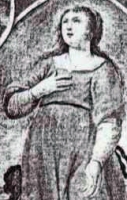
Iaquelina, Jakelina
Born to the nobility, the sister of the Duke of Apulia. To avoid marriage and live a life devoted to God, she disguised herself in men’s clothes, fled the house, and spent her life as a pilgrim to holy sites.
https://catholicsaints.info/saint-jacoba-of-rome/
• Venantius of Split
• Venanzio of...
Bishop in the Dalmatia region of modern Croatia. Martyred with several Christian companions.
• c.255 in Spalato, Dalmatia (modern Split, Croatia)
• relics brought to the Lateran Basilica, Rome, Italy in 641
https://catholicsaints.info/saint-venantius-of-spalato/
Marcella
Born to a farm family, Marcelle was a pious 10th century goatherd. We know nothing else about her, but the Benedictines in Chauriat who knew her, built a church in her honour in 976.
Chauriat, Puy-de-Dôme, France
https://catholicsaints.info/blessed-marcelle/
Girard
Camaldolese novice at age nine at Holy Cross abbey in Sassoferrato, Italy. Parish priest at Sassoferrato.
1280
18 November 1367 of natural causes
https://catholicsaints.info/blessed-gerard-of-sassoferrato/
Antonio
Franciscan friar at the monastery in Noto, Italy. All other information about him was lost when the monastery was destroyed by earthquake in 1693.
Noto Antica, Sicily, Italy
https://catholicsaints.info/blessed-antonius-of-noto/
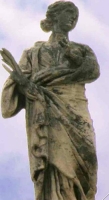
Sister of Saint Hermes of Rome whom she visited and supported when Hermes was in prison. Martyr.
c.125 in Rome, Italy
https://catholicsaints.info/saint-theodora-of-rome/
Leuçon
Zealous evangelizing bishop of Troyes, France for five years. Founded Notre-Dame-des-Nonnains abbey in Troyes.
c.656 of natural causes
https://catholicsaints.info/saint-leucone-of-troyes/
Muslim layman merchant, known for his charity. Convert to Christianity. For this, he was arrested, tortured and executed. Martyr.
c.1229
https://catholicsaints.info/blessed-abraham-of-bulgaria/
Beherond
Seventh century bishop of Amiens, France. Close friend of Saint Valéry of Leucone.
644
https://catholicsaints.info/saint-berhard-of-amiens/
Dodolino, Dodoleno, Dodolenus, Dodolin
Seventh century bishop of Vienne, France.
https://catholicsaints.info/saint-dodolinus-of-vienne/
Martyr.
Alexandria, Egypt, date unknown
https://catholicsaints.info/saint-stephen-of-alexandria-1-april/
Martyr.
Alexandria, Egypt, date unknown
https://catholicsaints.info/saint-victor-of-alexandria-1-april/
Martyr.
• on the Adriatic coast of modern Croatia
• relics translated to Rome, Italy
https://catholicsaints.info/saint-anastasio/
Martyr.
Heraclea, Thrace (in modern Turkey)
https://catholicsaints.info/saint-castus-of-heraclea/
Martyr.
Heraclea, Thrace (in modern Turkey)
https://catholicsaints.info/saint-victor-of-heraclea/
Martyr.
Armenian
https://catholicsaints.info/saint-irenaeus-of-armenia/
Martyr.
Armenian
https://catholicsaints.info/saint-quintian-of-armenia/
A group of Christians martyrs who died at various locations in Dalamtia and Istria (in modern Croatia, whose relics were later taken to Rome, Italy, and who are remembered together. We know the names Anastasio, Antiochiano, Asterius, Gaiano, Mauro, Paoliniano, Septimius, Telio and Venantius.
• on the Adriatic coast of modern Croatia
• relics translated to Rome, Italy
https://catholicsaints.info/martyrs-of-dalmatia-and-istria/
A group of Christians martyred. We know nothing about them but the names Alexander, Dionysius, Ingenianus, Panterus, Parthenius and Saturninus.
Thessalonica, Greece, date unknown
https://catholicsaints.info/martyrs-of-thessalonica-1-april/
• Aedhan Laech of Cill Aedhain
• Caesarius of Speyer
• Conval
• Glinglin
• Iosephus Yun Bong-mun
• Jacqueline
• Tesidio
CatholicSaints.Info Portable Edition